Related Research Articles

The tambourine is a musical instrument in the percussion family consisting of a frame, often of wood or plastic, with pairs of small metal jingles, called "zills". Classically the term tambourine denotes an instrument with a drumhead, though some variants may not have a head at all. Tambourines are often used with regular percussion sets. They can be mounted, for example on a stand as part of a drum kit, or they can be held in the hand and played by tapping or hitting the instrument.

Tap dance is a type of dance characterised by using the sounds of tap shoes striking the floor as a form of percussion. The sound is made by shoes that have a metal "tap" on the heel and toe. There are several major variations on tap dance including: flamenco, rhythm (jazz) tap, classical tap, Broadway tap, and post-modern tap. Broadway tap is rooted in English theatrical tradition and often focuses on formations, choreography and generally less complex rhythms; it is widely performed in musical theatre. Rhythm tap focuses on musicality, and practitioners consider themselves to be a part of the jazz tradition. Classical tap has a similarly long tradition which marries European "classical" music with American foot drumming with a wide variation in full-body expression. Post-modern or contemporary tap has emerged over the last three decades to incorporate abstract expression, thematic narrative and technology.

Step dance is the generic term for dance styles in which the footwork is the most important part of the dance. Limb movements and styling are either restricted or considered irrelevant.
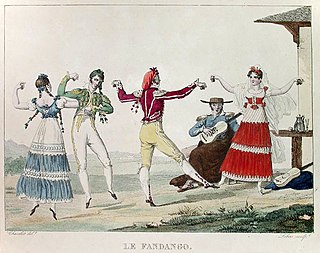
Fandango is a lively couples dance from Spain, usually in triple metre, traditionally accompanied by guitars, castanets, or hand-clapping. Fandango can both be sung and danced. Sung fandango is usually bipartite: it has an instrumental introduction followed by "variaciones". Sung fandango usually follows the structure of "cante" that consist of four or five octosyllabic verses (coplas) or musical phrases (tercios). Occasionally, the first copla is repeated.
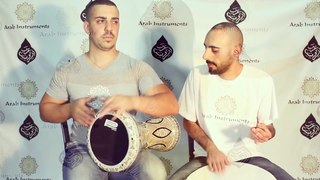
Zills, also zils or finger cymbals, are small metallic cymbals used in belly dancing and similar performances. They are called sājāt (صاجات) in Arabic. They are similar to Tibetan tingsha bells. In western music, several pairs of zills can be set in a frame to make a tambourine.

Clogging is a type of folk dance in which the dancer's footwear is used percussively by striking the heel, the toe, or both against a floor or each other to create audible rhythms, usually to the downbeat with the heel keeping the rhythm. The dance style has recently fused with others including African-American rhythms, and the Peruvian dance "zapateo", resulting in the birth of newer street dances, such as tap, locking, jump, hakken, stomping, Gangsta Walking, and the Candy Walk dance. The use of wooden-soled clogs is rarer in the more modern dances since clog shoes are not commonly worn in urban society, and other types of footwear have replaced them in their evolved dance forms. Clogging is often considered the first form of street dance because it evolved in urban environments during the industrial revolution.
Zapateo is a dance form rooted in the Spanish Flamenco and before that, in the ancient cultural influences imported in to Europe by the Gypsies.

Baile folklórico, literally "folkloric dance" in Spanish, also known as ballet folklórico, is a collective term for traditional Mexican dances that emphasize local folk culture with ballet characteristics - pointed toes, exaggerated movements, highly choreographed. As mentioned below, baile folklórico owes its inception to Amalia Hernández Navarro. Baile folklórico differs from danzas and regional bailes. "Folk dances", that is, "dances that you will find in the villages, not on stage" were researched and disseminated by Alura Angeles de Flores. A good rule of thumb is if the woman raises her hands about her head, it is folklórico. Each region in Mexico, the Southwestern United States and Central American countries is known for a handful of locally characteristic dances.

A flamenco guitar is a guitar similar to a classical guitar but with thinner tops and less internal bracing. It is used in toque, the guitar-playing part of the art of flamenco.
Tap dance makes frequent use of syncopation. Tap dance choreographies typically start on the eighth beat, or between the eighth and the first count.
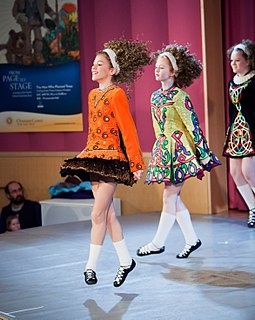
Irish stepdance is a style of performance dance with its roots in traditional Irish dance. It is generally characterized by a stiff upper body and quick and precise movements of the feet. It can be performed solo or in groups. Aside from public dance performances, there are also stepdance competitions all over the world. These competitions are often called Feiseanna. In Irish dance culture, a Feis is a traditional Gaelic arts and culture festival. Costumes are considered important for stage presence in competition and performance Irish stepdance. In many cases, costumes are sold at high prices and can even be custom made. Males and females can both perform Irish stepdance but for the most part in today's society, the dance remains predominantly female. This means that the costumes are mainly dresses. Each dress is different, with varying colors and patterns, designed to attract the judge's eye in competitions and the audience's eye in performance. General appearance besides the costume is also equally important. Dancers would typically curl their hair before each competition. Many dancers invest in curled wigs that match their hair color. Poodle Socks are worn with the dresses and shoes. These are white socks that stretch to mid calf with distinctive ribbing.
This is a glossary of terms that relate to flamenco arts.
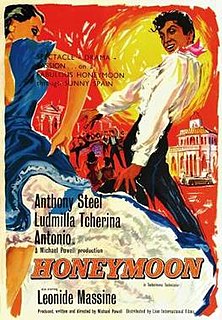
Honeymoon, also shown as The Lovers of Teruel in the United States, is a 1959 film by the British director-writer Michael Powell based in part on the ballet El Amor Brujo by Gregorio Martínez Sierra. The film stars Anthony Steel, Ludmilla Tchérina and Spanish ballet dancer Antonio, and features Léonide Massine.
Sean-nós dance is an older style of traditional solo Irish dance. It is a casual dance form, as opposed to the more formal and competition-oriented form of Irish stepdance.
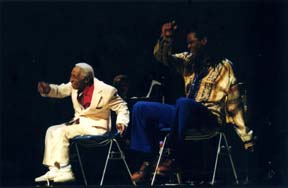
Reggio “The Hoofer” McLaughlin, tap dancer, instructor and choreographer started his artistic career in the subways of Chicago, where he had developed his unique style of tap dance hoofing, characterized by raw form of African American Tap. The combination of African foot stomping, Irish step and his lengthy experience contributes to the world of tap dancing.
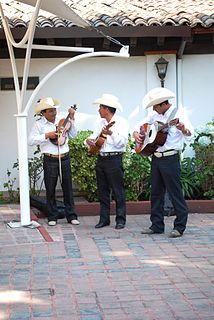
Son mexicano is a category of Mexican folk music and dance that encompasses various regional genres, all of which are called son. The term son literally means "sound" in Spanish, and is also applied to other unrelated genres, most notably Son cubano.
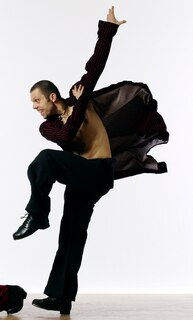
Max Pollak is percussive dancer and World Music expert. He was born in Vienna, Austria and became known for his work in percussive dance, World Music, tap dance, and choreography. He created "RumbaTap", which merged American Rhythm Tap with Afro-Cuban music and dance. He is the only non-Cuban member of the Afro-Cuban Rumba and folklore ensemble Los Muñequitos de Matanzas.
Zapateado is a style of dance and traditional music of Andalusian origins in metre 6
8, with lively movement, marked on two beats, the second being very stressed. The dance shows a gracious tapping. Humanists of 16th century affirmed that zapateado derived from the lactisma of the Roman dancers in times of the Empire.
Zapateado may refer to:
References
- David Ewen, Encyclopedia of Concert Music.
| This dance-related article is a stub. You can help Wikipedia by expanding it. |